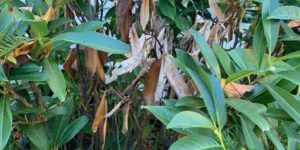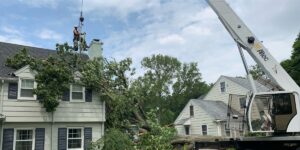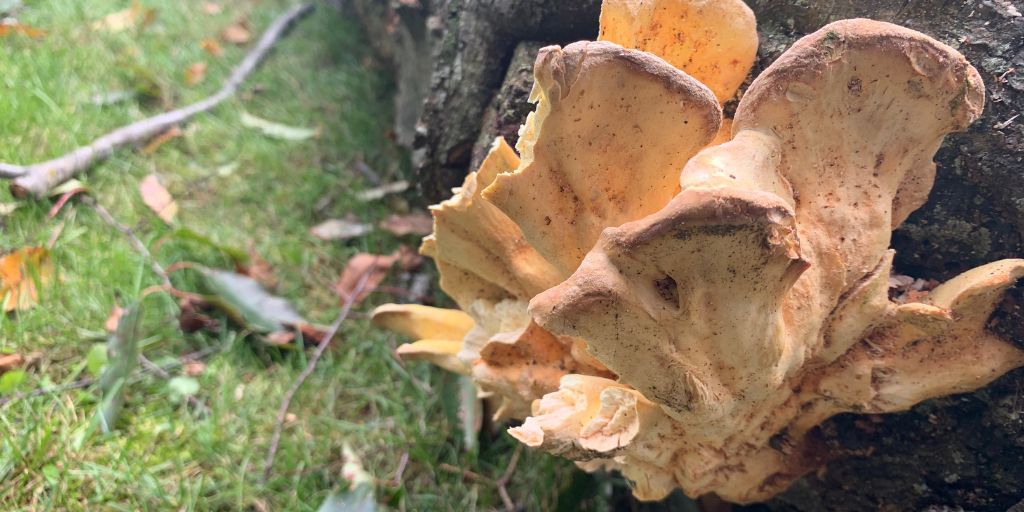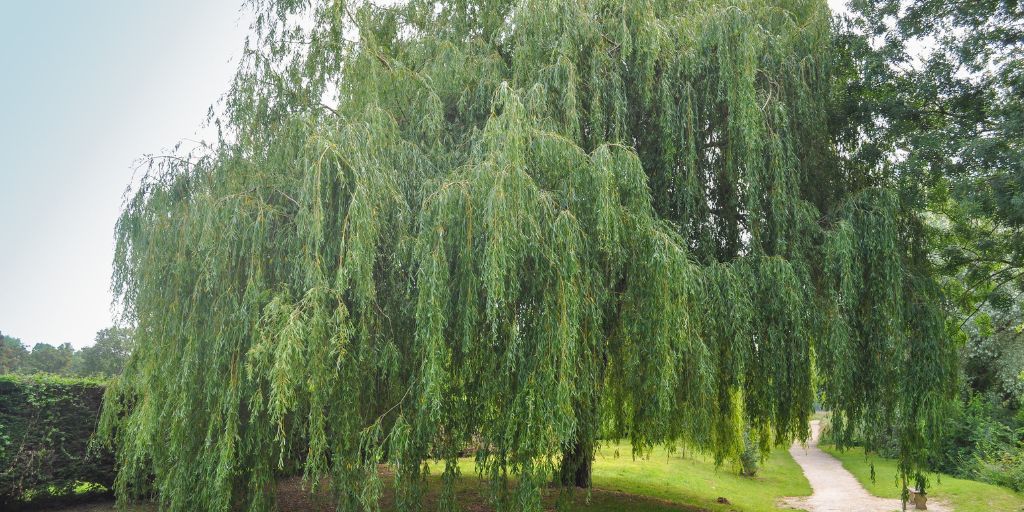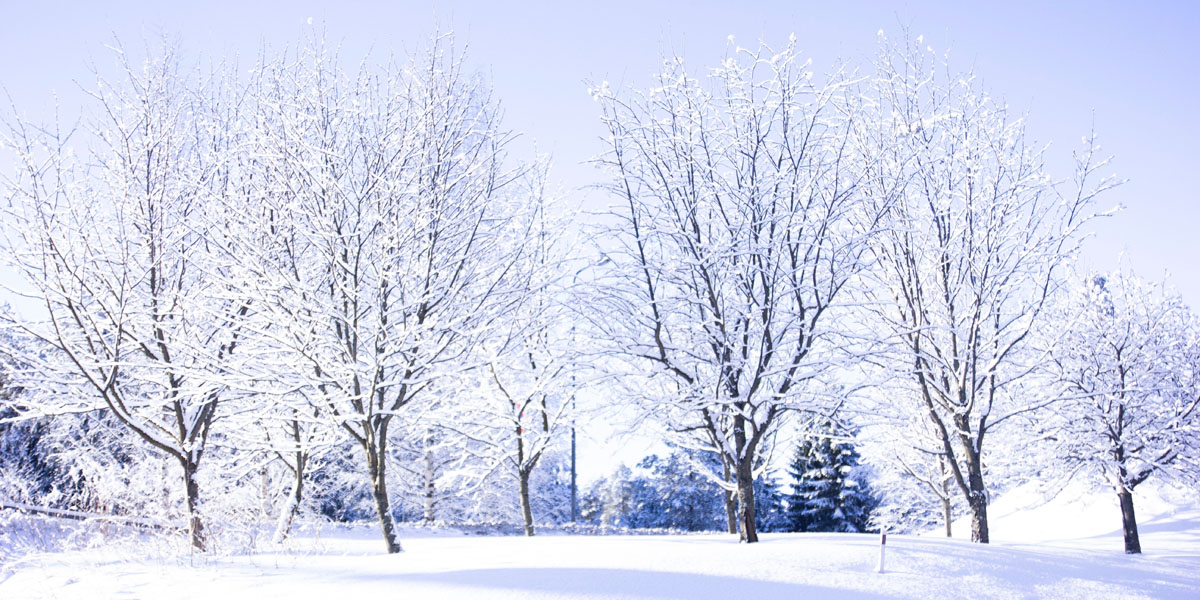Properly watering trees, especially trees planted or transplanted within the last two years, is one of the best things you can do for the health and vigor of your landscape. Proper watering, however, includes making sure that trees aren’t being overwatered. But what happens when the weather has a mind of its own and trees become flooded?
With the weather becoming more erratic and storms increasing in size and frequency, flooded areas in New Jersey have become a common summertime issue. While flood damage to trees may not be immediately apparent, there can be long-term negative effects, including dead or severely damaged trees. Ironically, missing or dying trees is one of the reasons New Jersey is seeing more flooding!
In this article, we cover:
- how flooding (or overwatering) can negatively impact your trees,
- signs that indicate a tree has been damaged by flooding,
- how to treat a flooded tree, and
- ways to prevent (some) overwatering or flooding in the future.
Trees Need Water, Nutrients, and Oxygen
Many property owners are surprised to learn is that trees can, in some sense, drown. Too much water is not always better!
Tree roots absorb water and nutrients from the soil, but they also take up oxygen from the ground – and all three are necessary for a tree to thrive.
Healthy soil, when not compacted, has pockets of air filled with oxygen. The roots take this oxygen to the rest of the tree. When these air pockets are filled with water (displacing the oxygen), however, the tree roots can suffer and even die.
Dead tree roots cannot bring water, air, or nutrients to the rest of the tree. The entire tree suffers and can appear wilted and unhealthy. In the worst-case scenario, the entire tree dies from root rot or lack of oxygen.
A Slow Diagnosis
Just as signs of salt damage from ice melt products may not become visible until spring, problems resulting from flooding (or overwatering) may not show up for months. Issues spotted in spring or early summer, for instance, might stem from flooding the previous summer.
Most tree species can withstand one to four months of flooding during the dormant season. But when floods happen during the growing season, such as when Hurricane Ida hit New Jersey in 2021, it’s a different story. During warmer weather, it only takes one to two weeks of flooding to cause major, long-term damage to sensitive trees and shrubs, and even kill some tree species.
A Tree Health Management assessment can spot some of these issues early, which is why we recommend regular tree evaluations by a certified arborist.
There are also some symptoms you can look for that may point to a previously flooded tree.
Signs of Damage in Flooded Trees
A tree that has received too much water will have tell-tale signs, such as:
- Wilting leaves
- Yellowing or browning at the edge of leaves
- Leaves with a brown center
- Green leaves that are brittle to the touch
Unfortunately, many of the signs of overwatering (such as from flooding) are the same as those seen when a tree is not receiving enough water. That’s because in both cases the roots aren’t bringing up enough water to the tree. In flood conditions, it’s because the roots are damaged. In underwatering, it’s due to a lack of available water in the soil.
If you know that the tree was recently standing in a pool of water, overwatering or flooding is probably to blame.
When a tree consistently receives too much moisture, there may be moss, algae, or mushrooms growing near the bottom of the tree. If this is the case, you may need to adjust your irrigation system or check for leaks.
Be Aware of Grading and Drainage
Some areas of your property are probably lower than others. Consider this when planting any new trees or plants. In lower areas, only plant those that are flood-tolerant, especially if these areas of your yard often have standing water.
Tree and plant species that are not as tolerant of excess water should be planted in well-draining ground that is higher.
Can Anything Be Done for Flooded Trees?
There’s nothing much that can be done while a tree is flooded – you’ll just have to wait for the water to recede. Once it has, you can remove any debris that might have pooled under your tree and ensure that the root flare hasn’t been covered up by soil or sediment.
NOTE: Flooded trees can often fall after a storm as the soil around the roots becomes saturated. If this is the case, contact us immediately.
If there is mulch around a tree that was flooded, you may want to rake it away from the tree to help the area dry out faster. Mulch is great at retaining moisture, but in this instance, you want water to evaporate so oxygen can reach the roots.
If you have an irrigation system, adjust it to prevent additional overwatering.
After that, the best thing you can do is keep an eye on your trees and watch closely over the ensuing months for any signs of damage from the excessive water.
Contact Alpine Tree for a professional inspection of your previously waterlogged trees. In some instances, deep root fertilization may help your trees recover as this method of applying fertilizer adds oxygen to the soil as well as nutrients.
Prevention is the Best Treatment
If you regularly water your trees or use an irrigation system, monitoring how much water your trees receive is one of the best ways to prevent overwatering. Have a plan in place for cancelling or reducing your irrigation when your property has received sufficient rainfall. You don’t need to water trees that just received plenty of rainwater!
If a tree has been planted in a location that receives too much water, you may need to consider removing that tree. Consistent overwatering will lead to problems such as root rot, and a stressed tree is more likely to fall prey to pests or diseases.
Of course, it’s difficult to plan ahead or prevent unexpected flooding!
Trees That Thrive on Excess Water
If there is a section of your property that consistently retains more water, you may want to plant a tree that is known for its capacity to withstand flooding.
Keep in mind, though, that these trees typically have extensive root systems and may need supplemental watering during dry periods.
Some trees that may do better in areas with more water include:
- River Birch (Betula nigra)
- Black Tupelo (Nyssa sylvatica)
- Weeping Willow (Salix babylonica)
- Baldcypress (Taxodium distichum)
- Red Maple (Acer rubrum)
- Hackberry (Celtis occidentalis)
- American Sweetgum (Liquidambar styraciflua)
- Overcup Oak (Quercus lyrate)
The Arborists at Alpine Tree Can Help
It can be difficult to recognize the signs of overwatering because they often look the same as underwatering or pest and disease issues.
Calling in a tree care professional from Alpine Tree to assess your trees and determine the root of the problem can help! We can then recommend the right tree service that may help your tree recover (or safely handle removal of the tree if it is too damaged to save).
Contact us today to schedule your tree health management consultation.


